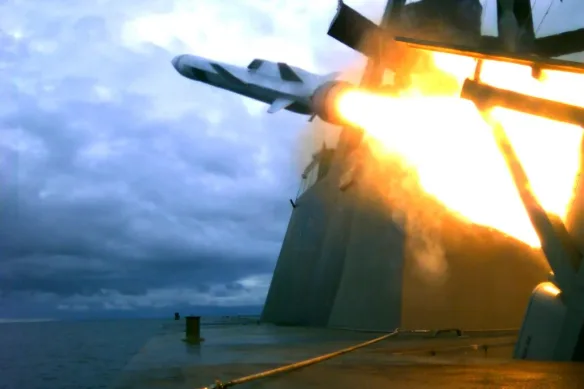Australia has announced a significant boost to its naval defense capabilities with a A$7 billion ($4.7 billion) agreement with the United States to acquire advanced SM-2 IIIC and SM-6 long-range missiles. The deal represents a major enhancement of Australia’s maritime defense capabilities amid growing regional security concerns.
Defense Minister Richard Marles announced that the SM-6 missiles will be deployed across the navy’s Hobart class destroyers and future Hunter class frigates. The Australian navy has already demonstrated its capability with these weapons, having test-fired the Raytheon SM-6 missile during joint exercises with the United States in Hawaii in August.

The SM-6, recognized as the most advanced naval air defence missile in the U.S. arsenal, offers versatile capabilities including defense against ballistic missiles, ship and ground target engagement, and air-to-air combat scenarios. Marles emphasized that these missiles will enable the Australian Navy to “strike maritime, land and air targets at long-range” while providing terminal ballistic missile defence capabilities.
This procurement aligns with Australia’s largest defense restructuring since World War Two, announced last year. The strategic shift prioritizes long-range precision strike capability and the fortification of northern bases, responding to what defense officials describe as intense competition between the United States and China in the region.
Defence Industry Minister Pat Conroy underscored the significance of the investment, noting that Australia faces “the most complex geo-strategic environment since the Second World War.” The country is actively working with the United States to upgrade bases in northern and western Australia, positioning defense assets closer to potential flashpoints in the South China Sea.
This substantial investment in maritime defense capabilities reflects Australia’s commitment to enhancing its deterrence capabilities and strengthening its strategic position in the Indo-Pacific region. The deal also represents a deepening of the defense relationship between Australia and the United States, as both nations work to maintain stability in an increasingly complex regional security environment.
The acquisition marks a significant step in Australia’s broader defense modernization efforts, demonstrating the country’s commitment to maintaining a capable and modern naval force in response to evolving regional security challenges.



